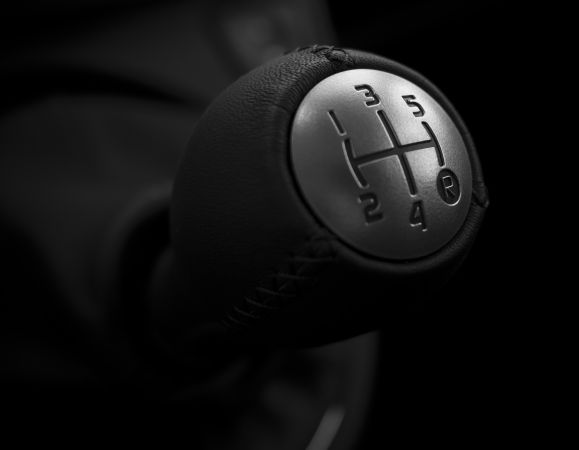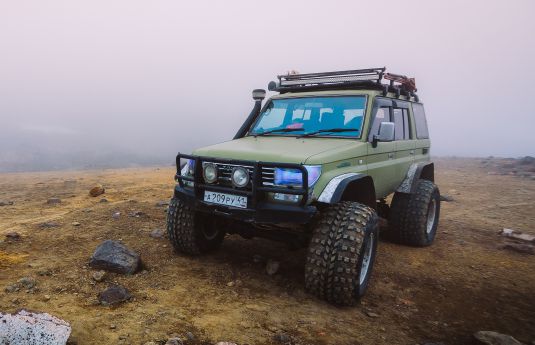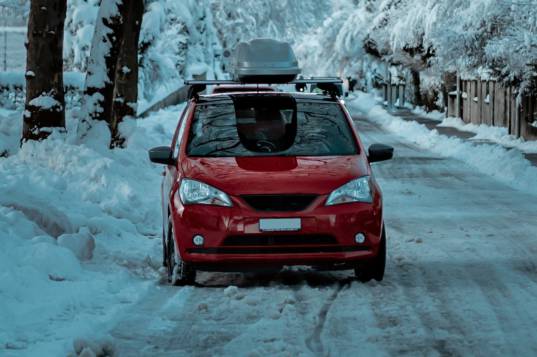A vehicle with automatic transmission allows you to select the maximum gear to which the transmission can automatically shift. We know that the 1 or 2 gears will keep the transmission in a low gear and not let it upshift. However, many drivers don’t know when to use gear 1 and 2 In automatic transmission. Many would argue that it’s the automatic transmission’s job to pick the correct gear, so why should we be allowed to pick a gear.
Gears 1 and 2 are to be used when you need more power and less speed while driving. You should use them while driving uphill/downhill or while driving in poor road conditions like snow, gravel, ice, sand, etc.
Table of Contents
What Are Gears 1 And 2 On An Automatic Transmission?
Most automatic transmissions give you the choice of manually selecting lower gears like the L, 1, or 2. The first is the slowest and the second one is a bit faster. When you select gear 1, the transmission will remain in the lowest gear and won’t shift automatically. This allows you maximum power as and when needed like on a steep hill but it also limits the speed you are driving at.

In the case of some automatic transmissions, the gear will shift out of gear 1 after you reach a specific speed like 30 mph. This is to prevent further damage to the transmission or engine or even cut power to the engine.
On the other hand, if you select the second gear, the transmission will start in 2nd gear and stay locked there. This is helpful when you drive on slippery surfaces or for initiating engine braking while you are driving downwards on a steep hill.
These two gears will prevent the automatic transmission from shifting to any higher gear and also prevent the engine from starting. What happens internally is that when the transmission lever is placed at low gears, the amount of fuel injected into the engine gets restricted. This, in turn, helps in boosting the torque and decreasing the engine speeds.
Basically, putting your vehicle in a low gear means that its speed is lower as compared to the speed of the engine. So, your brakes don’t need to do as much work to fight the gravity and keep the vehicle moving at a slow speed.
When To Use Gear 1 And 2 In Automatic Transmission?
Using low gears like gear 1 and 2 is a good idea when you plan to venture on some off-road driving or climb/descend a winding mountainous highway. Modern cars come with automatic transmissions and it really takes the burden off your shoulders by shifting gears automatically. However, in the situations listed below, shifting to gear 1 or 2 manually can help you a lot:
Driving In Hilly Areas:

Manually shifting the vehicle to low gear delivers more power to help you drive on hilly terrain. Climbing steep surfaces becomes easier and you don’t need to put in any extra effort. This is more beneficial when you need to descend a hill as it helps to slow down the vehicle and maintains a slow and steady speed. As a result, this reduces the amount of braking you would have had to do. This is very helpful because riding the brakes while climbing down a steep surface can overheat the brakes which can lead to brake failure.
Towing:
Since the low gears like 1 and 2 provide higher engine power, it becomes ideal for towing another car, boat, or trailer. The low gear keeps the engine torque even and consistent to deliver the power you need to tow something.
Slippery Surfaces:
You will also need to shift to low gears while driving on ice since you need to go slowly on slippery surfaces. The extra torque and low speed will allow you to control the vehicle better. Similarly, switch to gear 1 or 2 when you encounter muddy road conditions to keep your vehicle running at a safe speed. And you won’t have to hit the brake every now and then which reduces the risk of the vehicle slipping and losing traction.

Note! Do not use low gears like 1 or 2 if your vehicle’s speed is above 30mph otherwise you’ll burn out the transmission because using low gears causes engine braking.
When To Use Gear 2 Over Gear 1?
You must be wondering that the second and first gears are so alike and perform the same functions, then when do you pick one over the other? Well, the second gear works the same way as the first one. But it is recommended that you enter gear 2 only after you find that gear 1 isn’t serving the purpose. Gear 2 is the best choice on a slippery street where you need to lower the speed so that the tires get a better grip on the slippery surface. It will also help you brake downhill and keep the tires from spinning on slippery pavements.
FAQs
Is it bad to drive an automatic in 2nd gear?
No, it isn’t bad to drive automatic transmission in 2nd gear. Most automatic cars come with a Winter mode (W) that is supposed to start off from 2nd gear. This is there to prevent your vehicle’s tires from slipping or spinning on a slick winter pavement. So, driving your automatic car in 2nd gear shouldn’t be a problem at all.
How do you use first and second gear in an automatic car?
You will find some symbols like 1 and 2 in the gear setup that indicate that you can manually shift the gears in an automatic car. To do so, start driving and shift the gear level to 1 or 2 to shift it to first or second gear. If you want to downshift to gear 1 or 2 while you are already driving, then slow down a little and downshift the transmission shift lever.
Why do automatic cars have 1, 2, and 3 gears?
Automatic cars have gear 1, 2, and 3 to allow you to manually shift the transmission into a specific gear. Shifting to 1 will put the transmission in first gear. But shifting to 2 or 3 will put it in the most optimal gear up to the selected gear as per the speed of your vehicle, engine load, etc. This becomes helpful while you try to move a heavy load via towing, going downhill, driving on slippery surfaces, poor road conditions, etc.
Conclusion
The automatic transmission shifts the gears on its own but you can prepare your vehicle for a long downhill or uphill driving. It’s better to shift your car to gears 1 or 2 before starting a steep incline or decline and while driving in poor road conditions like on mud, snow, or ice. This will prevent brake failure by keeping them from getting overheated and also give you better control over the vehicle.
